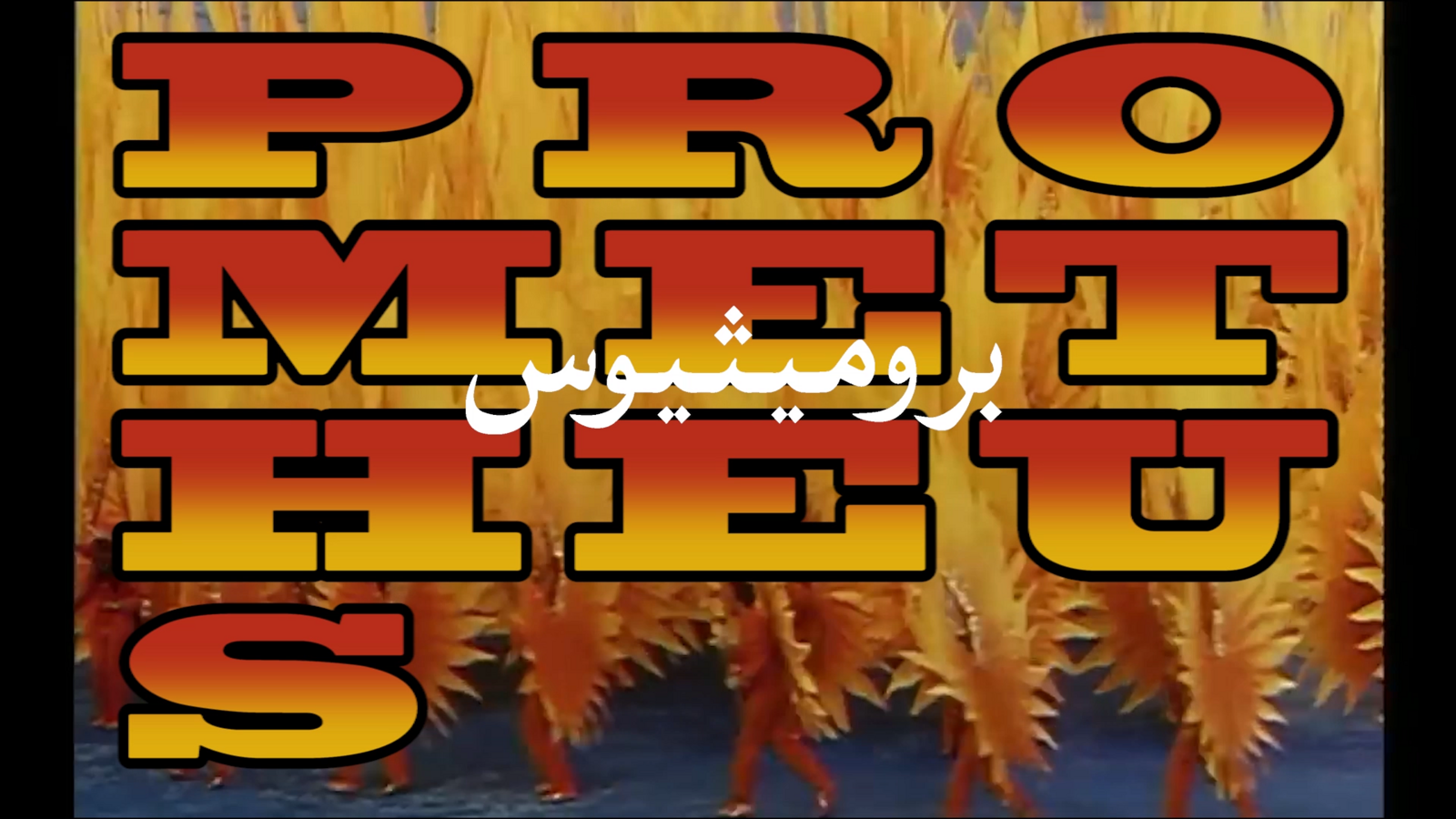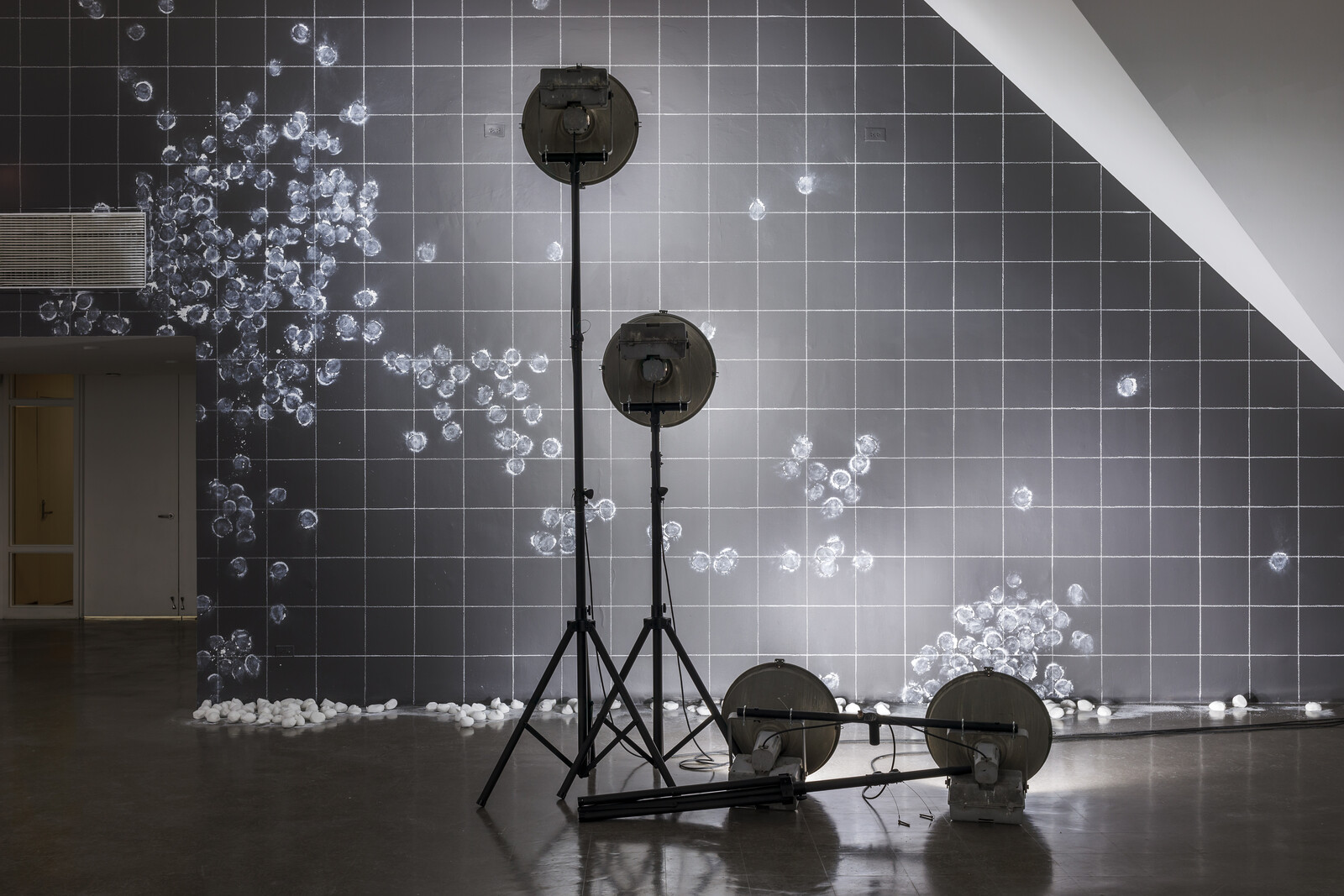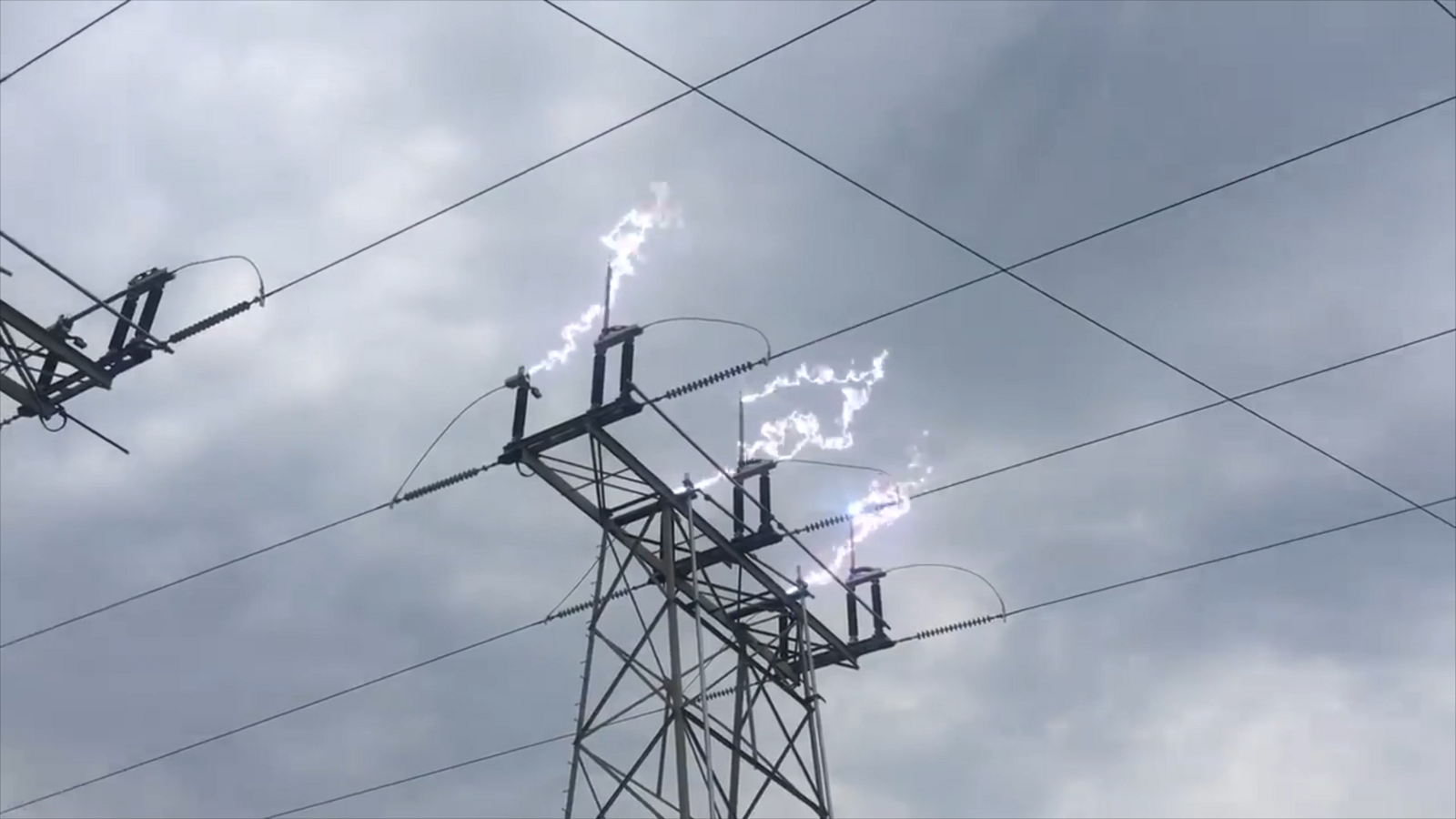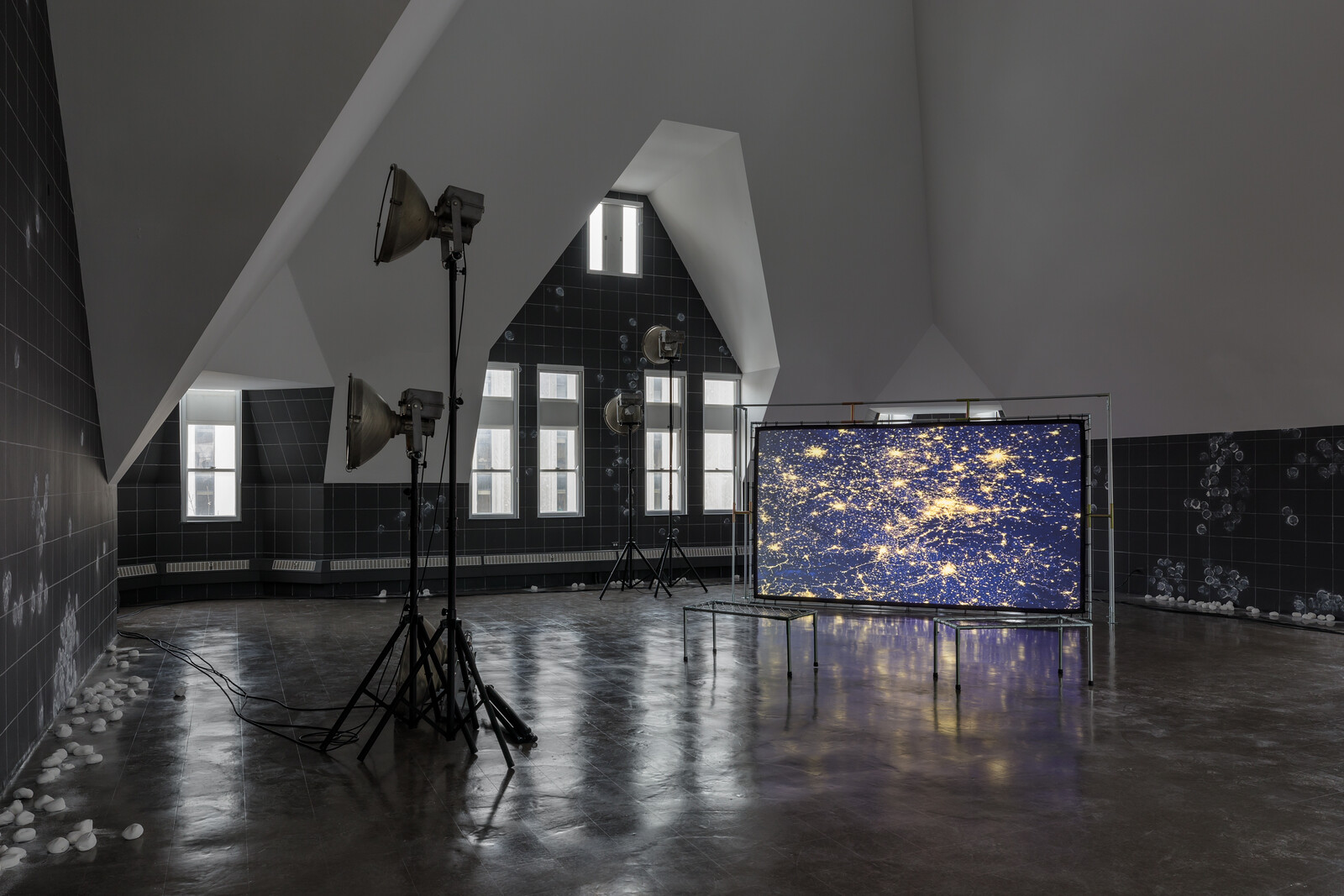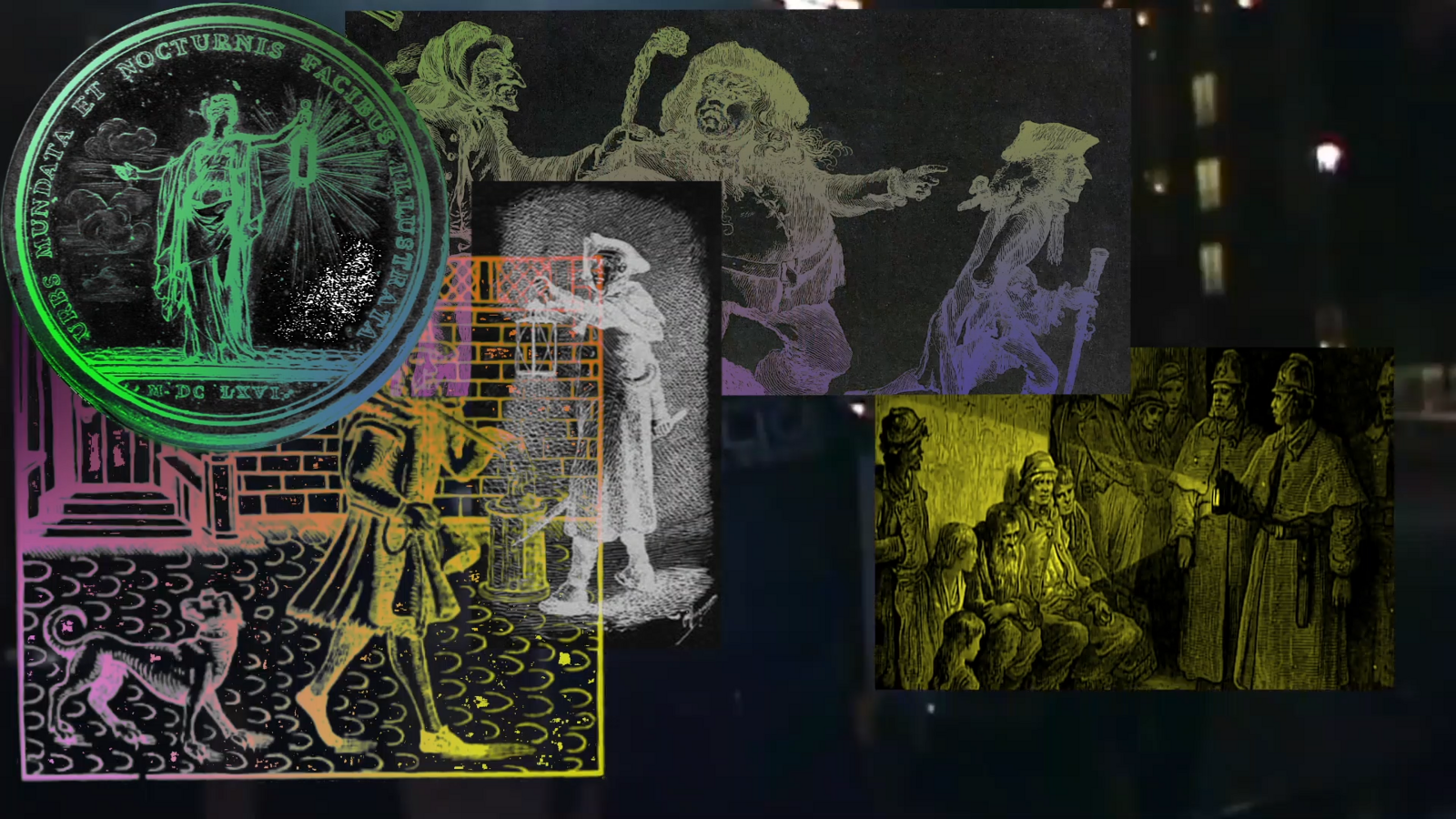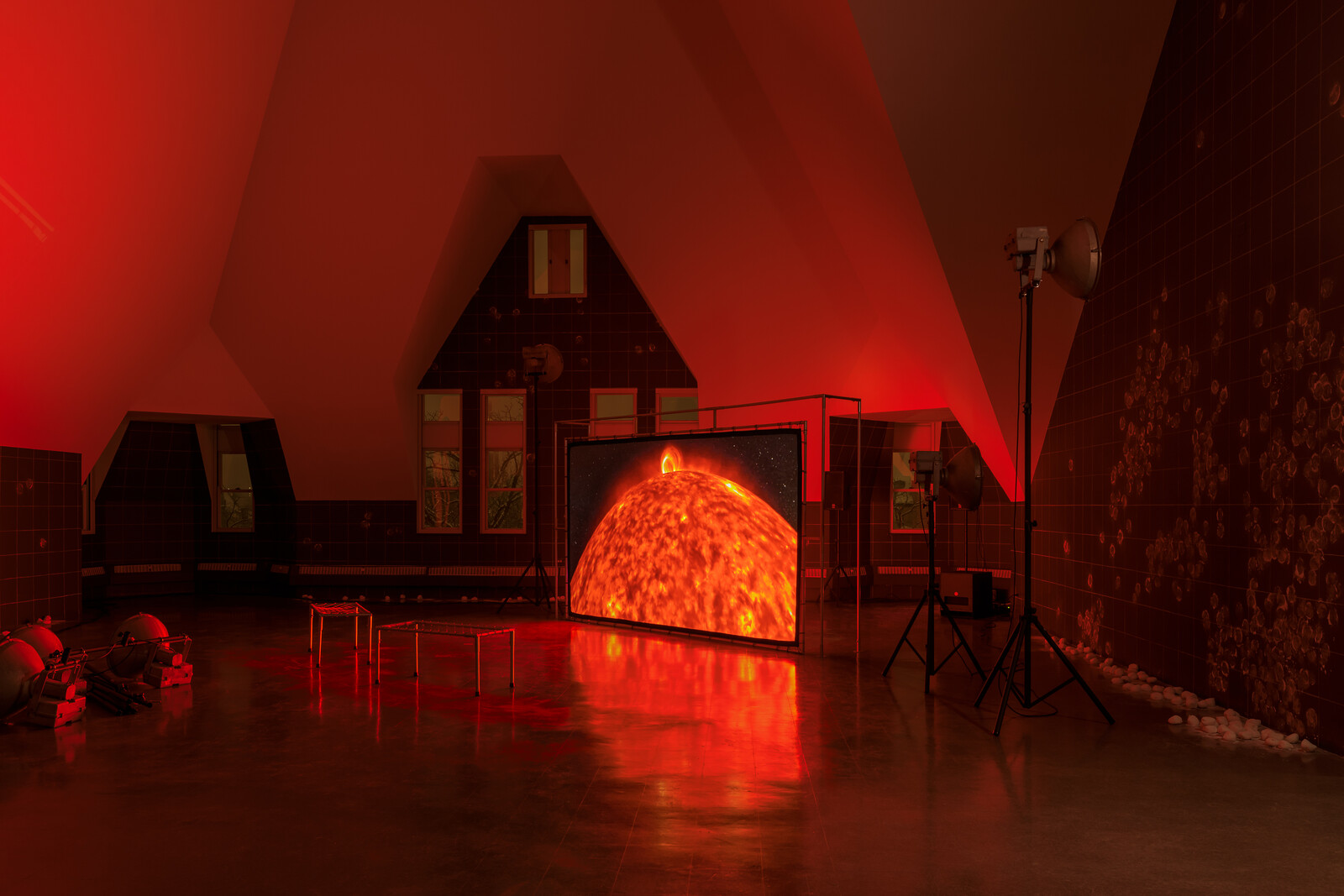One Sergei Eisenstein quote I’ve always remembered: “montage is conflict.”1 It’s the ultimate expression of how art can be politically relevant—not by representing or calling for struggle, but by manifesting it formally. Eisenstein argued that while conventional film merely directs emotions, montage directs the entire thought process. A century later, Beirut-based artist Haig Aivazian’s examinations of conflict in the Middle East insist that montage is every bit as expedient today as it was upon its invention.
Aivazian’s solo exhibition at The Renaissance Society features two densely edited videos: All of Your Stars Are but Dust on My Shoes (2021) and Prometheus (2019). Roughly twenty minutes apiece, these play alternately on opposing large screens within a third work: the moody, site-specific installation 1440 Couchers de Soleil par 24 Heures [1440 Sunsets every 24 Hours] (2017/2021), which covers the gallery’s raking walls in a chalk grid reminiscent of surveillance technologies such as radar and heat maps. In both of the videos, Aivazian layers and splices found footage to brutal effect, mobilizing elemental motifs—fire and light—to trace themes of surveillance, protest, cultural hegemony, and military invasion that have characterized the relationship between the West and the Middle East over the past several decades, including Aivazian’s home country of Lebanon.
The more formally straightforward of the two videos is Prometheus, a rhythmic, unrelenting mash-up of footage from the first American-led invasion of Iraq in 1990 and the winning campaign of US basketball’s “Dream Team” at the 1992 Barcelona Olympics. Aivazian follows the presence of fire as a throughline connecting the historical episodes, from the ceremonial lighting of the Olympic torch to fields of oil set ablaze in Kuwait—each a propagandistic spectacle in its own right. The artist’s stark juxtapositions force uneasy, provocative parallels: between fighter jets and sprinting athletes, dropped bombs and dunked basketballs. A shot of Michael Jordan bowing to accept his gold medal cuts to a statue of Saddam Hussein toppling forward. We watch NBA players fitted with devices to capture their likenesses for video games, then American soldiers take biometric photographs of prisoners of war. Churning forward to a decidedly unresolved ending, the barrage of sound and imagery shapes an understanding of American hard and soft power—military and cultural conquest—as inextricably bound up in the same nationalistic project.
All of Your Stars Are but Dust on My Shoes is more ambitious in its scope and looser and more open-ended in its execution. Aivazian winds an informal, nonlinear history of the relationship between light and violent policing, beginning with the whale oil industry that a voiceover describes as turning “monsters into light.” From there, Aivazian cuts to a contemporary meme-style clip by a US police department, in which headlights of cruisers count the beat to a catchy song—a bitterly humorous juxtaposition. Aivazian jumps around in time and production quality, between the banal and the brutal; he builds an associative lineage that connects the first flashlights used by police in Victorian London with the high-tech motion-sensing floods that surveil low-income and non-white neighborhoods in the US today. He shows us a protest against a power company’s shutoffs in Beirut, and a time-lapse of Syria that tracks the ongoing war through the decimation of its electrical grid. We also see light used in counter-protest, as in a particularly arresting episode where demonstrators use an electrical fire to blockade against an onrush of riot cops—a scene shown first from the perspective of the participants, and then from an aerial, sniper’s-eye view.
Aivazian is part of a lineage of artists who’ve adapted the montage to different moments and ideological projects—Chris Marker, Harun Farocki, Agnès Varda, John Akomfrah, and, more recently, Hito Steyerl and Arthur Jafa among them—but there is something in his approach that feels, if not truer to the technique, then a more direct distillation of its usefulness for ethically engaging the subject of geopolitical conflict. With its near-total rejection of narrative arcs and cinematic effects, Aivazian’s merciless editing forces the viewer to take an active stance in relation to the moving images, one that’s both more analytical and more alienated.
The works offer no catharsis or dénouement, and as I left them behind, they in turn left me troubled, disoriented, and unsettled, continuing to parse the clashes, tensions, and discordant overtones as the torrent of images replayed across my mind’s eye. I suspect this effect is something like what Eisenstein had in mind when he wrote: “The film’s job is to make the audience ‘help itself,’ not to ‘entertain’ it. To grip, not to amuse. To furnish the audience with cartridges, not to dissipate the energies that it brought into the theater.”2 A century later, Aivazian’s work attests to the continuing power of montage to haunt, agitate, and make the familiar strange; in so doing, it offers one critical framework through which to process the propagandistic images that suffuse every realm of contemporary life.
Sergei Eisenstein, Film Form (New York: Harcourt, 1949), 46.
Ibid, 84.


